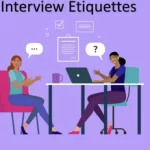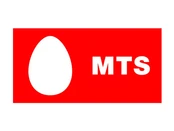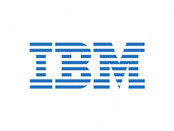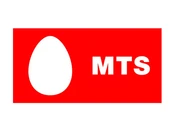What is a Loyalty Program?
A loyalty program is a marketing technique used by brands to incentivize customers so that they continue purchasing their products or services. Typically, all these programs reward customers for their repeat business through different means.
Loyalty programs are designed to build customer loyalty, which can help businesses to increase revenue and improve customer satisfaction. Additionally, loyalty programs can provide businesses with valuable data about their customers’ buying habits and preferences, which can be used to improve marketing strategies like targeting, monetisation etc.
Is Loyalty Program really needed? If yes, then why?
Is loyalty from consumers a far fetched dream for Marketeers. Well, in this online world we feel so because of multiple options available to customers. Brands feel that why can’t customer come back on their own without any loyalty program hook.
Well there are many fishes in the pond and each fish is attractive in some way or other. A brand with an extremely unique USP might flaunt & boast to haven’t any LP (as the customer will come back by their own), but for all others this can’t be the case. Practically LPs are used to retain & increase revenue without spending money on marketing again.
But, yes LP works like a charm if they are designed keeping consumers in mind but can fail miserable if only maths (tabulation/calculation) is kept in mind.
What is the guide for Implementing a LP
LP implementation involves 3 stages :-
All stages involves further substages (sub steps). Stage 1 which is designing a LP is dealt in detail. In this we will see Components of LP, Key ground work for LP and Types of LP & how to select them.
Every LP has 5 components in it (5T’s)
1) Terms of LP :- LP have terms & conditions (rules) that define WHEN & HOW MUCH customers can earn and redeem rewards. It contains what type of rewards a customer will earn like points, cashbacks, freebies etc. It contains all use cases and detailed terms & conditions of earning & redeeming, mentioning all exceptions also.
2) Tabulation supporting a LP :- LP is made to increase retention. But it should be ROI positive and not negative because brand’s wants to earn more revenue & not lose revenue. Obviously there will be some spend on LP, but spends < earnings from repeat purchase. So ROI should be positive.
3) Title (Name) to a LP :- Brands should think of a catchy name to market it. Communication can take many forms, such as email, SMS, or social media, and should be timely, relevant, and personalized
4) Tech stack :- A good LP has a robust tech stack. Tech is needed to measure data, track rewards, and automate program management. Technology can also be used to personalize rewards and offers for individual members.
5) Tracking attached to LP :- Similarly data tracking & analytics help brands to understand customer behavior, identify trends, and make data-driven decisions about program design and rewards.
Steps to design a successful LP is basically deciding on all the above components of LP in much depth. Each component (Terms, Tabulations, Title, Tech, Tracking) is a step in itself which should be designed individually.
Key ground work for designing a successful LP (5C’s approach)
A very important & crucial question is ” What are the key strategies that one should adopt to get a successful LP. The answer is 360 degree analysis & deep study of 5C’s Customer, Competition, Cost, Commitments & Challenges. There is no other formula for a good LP. If a marketer can analyse all above 5C’s in detail, a good & successful LP can be designed easily. Let’s understand these 5 C’s in detail
1) Analyze CUSTOMER :- Look for needs & requirements of your customers by doing primary research. What are the hooks for them to coming back on your platform. Do a deep study on demographics, behaviour, economical & psychographic factors of your TG e.g. Audi customers will be keen on first class customer support, while rural customers can be keen on discounts & connivence. FEEL your customer first to make LP second.
2) Analyze COMPETITION :- Do a comparative study of the type of loyalty program may be influenced by the competition in the market and what other businesses are offering to their customers. Certain industries may have specific types of loyalty programs that are more common or expected, such as airlines offering frequent flyer miles. Remember standing out from crowd is important but not becoming an odd one out.
3) Analyze COST :- There are no free lunches. Every LP incur some costs like tech costs, rewards costs, hiring costs, marketing costs etc. Understand each cost head in detail to analyze the overall burden on a brand for launching a LP. An extremely lucrative LP which burns lots of cash for brand is not advisable at all
4) Analyze COMMITMENTS (ROI) :- Do a proper cost benefit analysis. Do your calculations properly. Make sure the output remains positive in long term. Adopt a balanced approach where the ROI is positive yet LP is lucrative and high perceived value & good real value. The loyalty program should align with the business goals, such as increasing sales, retaining customers, or improving customer satisfaction
5) Analyze CHALLENGES :- As I have mentioned earlier that Tech & Tracking are 2 important components of a LP, but there can be lots of challenges like tech issues, data tracking issues, right talent issues and so on. Think over this & plan properly to counter each challenge. If one overlooks this, this will create a trouble later on. Also make a scalable and agile model which can be modified as per the demands and needs of customers
Types of LP (basically types of ‘TERMS’ of a LP) ?
LP can be categorized into multiple buckets. The basis (criteria) of buckets are on 3 axis
1) How rewards can be earned (like pay & become a member of LP, get referred & become member of LP etc.)
2) What type of rewards (cashbacks, priority services, discounted rates, special privileges etc.)
3) Ecosystem of getting rewards (tiered based, milestone based, point based etc.)
Note :- LP are timeline based. Some are for lifetime & some for few months/years
So there can be many permutations and combinations of the loyalty programs. See this table
Brands can select one or more elements from each column and a new LP can be created. So there can be multiple combinations, brands can play upon. Let’s understand by an hypothetical example & will we will also see some existing examples.
A food delivery app wants to design a loyalty program. Let’s say it chooses ‘Pay & become a part of LP’. Next it chooses ‘Special perks’ like free delivery’ & also ‘Discounts on few items like cakes etc.’ Next it chooses a ‘Percentage based ecosystem like extra 5% discount on cakes if the order value is above Rs 500.’ That’s it. LP has been made
Let’s see few examples of popular LPs
1) Amazon prime :- A LP in which a customer can pay & participate. Gets special perks for free delivery, fast delivery (prime slots), early access to sales & also the high quality content.
2) Dineout :- A LP in which can pay & participate for a limited period of time. Customers get extra discounts on restaurants. The discounts are calculated on as percentages & varies from one restaurant to another.
3) Zomato gold :- A very popular LP which started as pay & participate model where a user will get 1+1 dish which later on modified to a certain percentage of discounts & free delivery
4) Urban company LP :- This LP is again a pay & participate model where a user will get discounted rates on the services. The discounts are calculated as per the percentages
5) Few health insurance LP :- Where a user will get a rebate on premium (through some percentages) if a particular set of activity is tracked like daily walk
6) Flight booking apps like Yatra, MMT :- In this all customer can enter into the LP without any payment. One can earn ecash (virtual cashbacks) & redeem in future bookings. Here also percentage rules are applied in earning cashbacks and redeeming cashbacks.
7) Banks LP :- These are again free of cost but this is tier based basis on the amount of money you earn in your bank account. Suppose you earn 50k per month then you can be silver member and if you earn 100k per month you can be a gold member. The perks varies from tier 1 to another like credit limit, interest rates, dedicated relationship manager etc.
There are numerous examples of LP which are made by above table. Brands can select one or multiple elements from above to design a LP.
Things to keep in mind (DO’s) for a successful LP
1) Easy to understand (Simplicity) :- Many a times LP are created with lots of complexities in T&Cs. Customer don’t understand those & don’t opt for. A big mistake. LP SHOULD BE VERY SIMPLE & EASY TO UNDERSTAND. If this is tough, it is useless
2) Real value add through rewards (Relevant & Real rewards) with no/less Marketing gimmicks :- Now as marketing professionals we think of ROI positive for LP (nothing wrong in this), so we become greedy & play with rewards. We tend to give rewards which have just high perceived value & low real value. Again a mistake. Remember customers are smarter than you. While keeping a ROI positive is must, but compromising a lot of rewards will be devastating for LP e.g. a LP which states that a customer can earn e-cash of upto 30% of the order value, which can be utilised in the next order. Sounds interesting, but there is a T&C that only 5% of the e-cash can be redeemed in next order. This is like just showing big dreams with no reality. Be relevant & realistic.
3) Communicate well :- LP should be simple, easy & communicable. The communication strategy should be 360 degree with understandable content & exploiting all channels of communication. You can make a standard communication strip to be infused in all comms e.g. “Pay just Rs 150 & get free deliveries for 5 months. No T&Cs.” Try to maximize the frequency of communications without much intruding the privacy. Brands should also spend some amount of money to ‘market’ it well on different social medias. Be continuous & consistent.
4) Personalised experience (if possible) :- If brands can make customised versions of LP for different cohorts of customers, that would be really great. However it is easier said than done. Multiple versions of LP suited for different cohorts can be time consuming, costly & ROI negative. So brands has to do a proper maths before taking this bold step
5) Encourage social sharing for organic branding :- Always encourage your LP customers to spread word on their own handles to bring more customers. These will be purely organic in nature. This will organically increase your customer base thereby saving costs
6) Incorporate open feedbacks & have Agility :- I have seen LPs are tweaked with time. As customers’ demand, needs, requirement change, LP needs to be modified. One should always design LP keeping a long term view in mind. The tech stack used should be scalable for future additions. Also brands should take regular feedbacks from LP customers. Their feedback should be incorporated in the LP to make LP more lucrative.
Loyalty Programs (LPs) are made to increase retention. LPs are made with a business goal in mind. It contain 5 key components (5T’s) which are Terms, Tabulation (calculation), Title, Tech & Tracking. All components should be thought off properly while designing a LP
Brands should do deep analysis on 5C’s while they are in process of designing LP. These are Customers, Competition, Cost, Commitments, Challenges. These will help brands to choose a type of LP & make it successful
Brands should use both heart & mind while designing LP. It should be made while wearing both hats a) Marketers hat b) Customer’s hat. While doing maths, tabulation, calculation is very important but one shouldn’t be unreasonable & put ‘over’ emphasis on ROI being positive. Be balanced in your approach of rewards & it’s real value.
Brands should be ready to tweak LP as per the changing needs of consumers & hence adopt an agile approach which is scalable in future.
Do let me know your thoughts in comments!





























